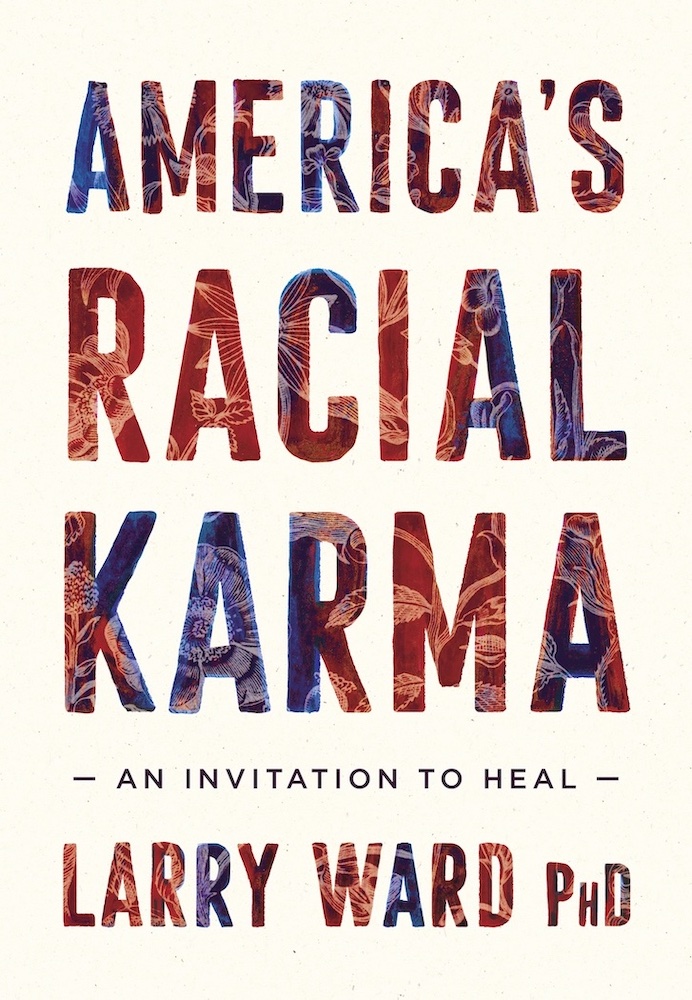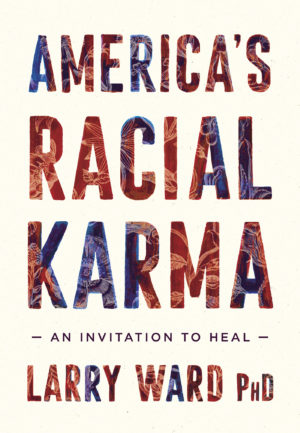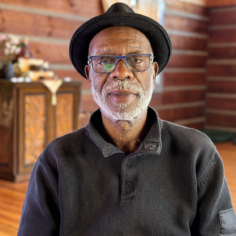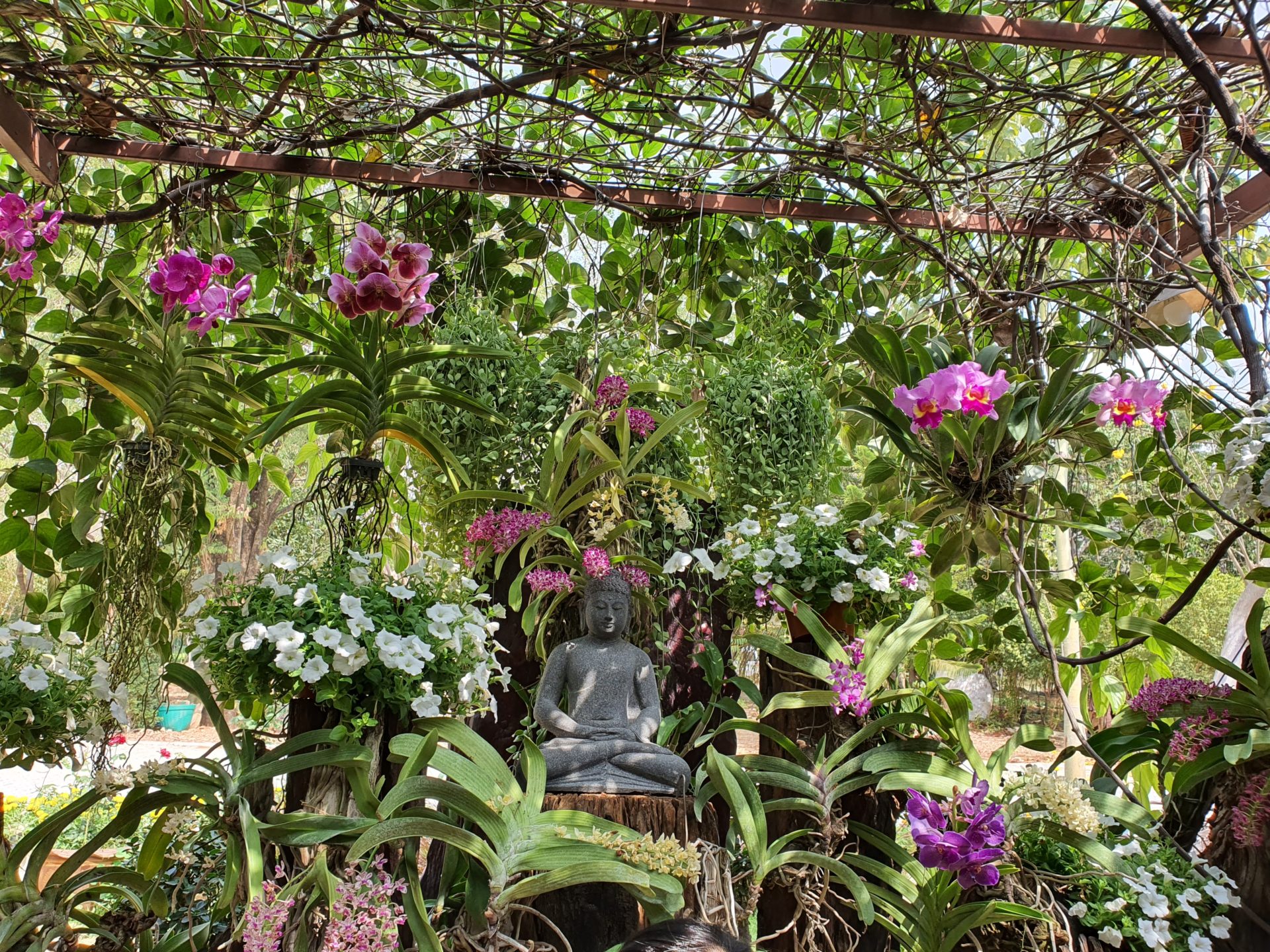An Invitation to Heal
By Dr. Larry Ward in October 2020

In America’s Racial Karma, senior Dharma teacher Larry Ward helps us locate the seeds of racial discrimination within all of us and offers us a way to bring clear intention and compassionate action to our path of transforming racism and healing from racialized trauma.
An Invitation to Heal
By Dr. Larry Ward in October 2020

In America’s Racial Karma, senior Dharma teacher Larry Ward helps us locate the seeds of racial discrimination within all of us and offers us a way to bring clear intention and compassionate action to our path of transforming racism and healing from racialized trauma.
My growing years took place in Cleveland, Ohio, on the East Side of the city near Lake Erie. It was a predominantly African American neighborhood in the 1950s. Interactions between children and adults of different races, other than on the job or through commercial transactions, were controlled and rare. To my young eyes, the community moved about their days going to work, to church, and to school in a kind of stunned silence about race, as if hoping that by never acknowledging it, the bitterness just under the surface would not leak out. Even then, I sensed we were all wrapped in a blanket of fear and yearning. The nightly news of my teenage years expanded its coverage of voices echoing the pain of centuries, determined to be silent no more. Many of these voices and their stories became focal points in the story of race in America, including those of Rosa Parks, Angela Davis, Dr. Martin Luther King, Malcom X, and Dennis Banks.
I appreciate your reading these words because I know it takes a certain conscious courage to read anything related to the word “race,” because there are few other words in the English language that can activate our autonomic nervous systems so quickly. I am also aware it is no small task to attempt to describe America’s racial karma—what it is and how to transform it—especially if, many days, it may feel as if there is little or no movement forward. Yet, I know once we recognize America’s racial karma as actions that continue to give birth to the notion of white racial superiority and its psychosocial consequences, we gain the necessary insight to change course. We may rage and grieve, but we will also begin to heal.
As a black man writing about race in America, I do not forget the first peoples of this land, their genocide, and their continued presence. Many of us tend to think of African American bodies when we think about America and race, yet the story of the racial hierarchy in this country began long before the arrival of African people on these shores. It stretches on to the present day. From my childhood in the fifties through the era of the war in Vietnam, when Dr. King and Thich Nhat Hanh found in each other a source of friendship and political solidarity, on through the many international and domestic conflicts in which race has played a part, in my lifetime the cycle of America’s racial karma has become very clear. We live in a racialized world that existed before we were born, and our minds have been conditioned to see race as real. This racialized awareness permeates us like a disease of the psyche, cementing our minds to social worth and value by skin pigmentation. It animates our thinking, speech, and behavior individually and collectively. It influences our attitudes, emotional states, habitual dispositions, and social organization. How has this mindset become so powerful?
As followers of Thich Nhat Hanh, we know our collective awareness is both enduring and impermanent, constantly changing. If we look deeply into healing the mind and body’s role in creating, nurturing, and protecting our racialized awareness and its actions, we may see an opportunity for transformation. America’s racial karma invites us to be attentive to our heart’s conditioning. It invites us to embrace our shared racial trauma at its roots and heal our compromised social imagination, so we may be the ones who come through the mists of racial ignorance into what we may call a good society.
My experience living in many countries and my formal and informal education have taught me how limiting and dangerous any one cultural bias can be. After living many years abroad and in California, in the year 2011, I and my wife, Peggy, who is white, relocated to beautiful, progressive Asheville, North Carolina, to start a small business and develop a community of spiritual practice. After settling into our new home, we were invited by Dr. Gail Williams O’Brien to lead a meditation retreat in the college town of Chapel Hill on the other side of the state. This connection was made through our association with Thich Nhat Hanh and the Plum Village Community of Engaged Buddhism; Gail is a history professor emerita at the University of North Carolina–Chapel Hill and the author of The Color of the Law: Race, Violence, and Justice in the Post-World War II South.
On the six-hour drive from Asheville to Chapel Hill to meet Gail, I was at first startled by the presence of Confederate flags flying from many homes and businesses along the way. My sense of shock gave way to an increasing uneasiness within my body and mind, compounded each time I encountered a Confederate flag on the decals of a vehicle in front of me. In neighborhoods visible through my car windows were subtle and not-so-subtle reminders of Jim Crow attitudes and America’s habits of racial dissociation and aversion. There seemed to be a rhythm of daytime integration and nighttime segregation. While some of the overt patterns of segregation had changed, it was clear to me that the psychological wounds of the past remained unhealed.
Stopping at gas stations, the politeness I did experience seemed constrained, with furtive eye contact. The air was filled with discomfort, and I felt like an alien in my home country. My sympathetic nervous system went on high alert. My heart raced, I had knots in my stomach, and memories rose up within me of past trips South in the 1970s, in which my life had been threatened. My mind was filled with concerns for our safety. I had left the United States to travel and work abroad for decades, but on returning, I was filled with the same fear from my childhood and teen years. I had to ask myself: why did I, a grown man, not feel safe in 2011—three years into the Obama presidency—in my home country?
The anger, sadness, and disgust of this experience revealed themselves to me later during our community meditation. My body and mind began to calm down. I looked deeper into my experience and realized I was witnessing the impact in myself of a society built on the sinking sand of the self-esteem complex. I began to see how all of us—regardless of how we or our ancestors came to be here—have been conditioned to live on this land as forever strangers. Later, after a meal, we discussed Gail’s book’s importance and our new life in Asheville, and managed to return to some equanimity and enjoy ourselves.
Nevertheless, I woke up the next morning with a question on my heart and mind. Why is the notion of racialized consciousness, with white skin on the throne of the human species, so intractable in the hearts and minds of many? Despite its trail of suffering around the world—for colorism is far from unique to America— why does it persist? At first glance, it seems that movements, martyrs, and magistrates have not set us free from this great social-psychological construction. This awakening nine years ago raised up in me the idea of America’s racial karma and inspired me to talk with people wherever I went about the subject of race and its effect on our consciousness. The themes of my book, America’s Racial Karma, were born from a decade of such talks.

Ten years before my and Peggy’s trip to see Professor Gail, I had been introduced to Buddhist psychology while on retreat with Thay in Plum Village, France. His book on the subject, now known as Understanding Our Mind, had a different name back then: Transformation at the Base. This title gives us a good clue as to what is required for radical shifts in consciousness. Transformation at the base affects the roots of our body and mind. This is why we practice.
With this lens of Buddhist psychology, I began to see a fresh way to understand the lived experience of consciousness as a dynamic and multilayered reality. I began to see how deeply embedded the idea of race is as the psychological base of modern self and society. It’s entwined with our notion of ourselves surviving within a world of fear, conflict, and competition, and painful though it may be to hold on to it, without awareness, we cannot let it go.
Not everything has an answer. Some things are not fixable. So, I’m not talking about fixing our racial karma. I’m talking about bending the trajectory and transforming the energy that sustains it. We’ve recently witnessed the great feeding of animosity and the joy of bigotry. Yet, as Thay teaches us from the Buddha’s Discourse on the Four Nutriments, nothing can live without food. If it’s not fed, it will not live. The practices of mindfulness, concentration, and insight invite us to go deeper into our collective psyche and see how it creates a social psychology that nurtures it, which in turn keeps feeding the institutions that damage us so intimately.
For months after my visit to Gail, I continued to reflect on my question: what lies at the roots of this social construction of racial hierarchy? I began to recognize a kind of catharsis, a sense of energy more like worship, a quality of transcendence that a religion would provide surrounding the notion of white supremacy. I then began to understand its seductive conditioning power and subsequent seeming intractability in history and in the present. Our racialized consciousness is the greatest achievement of white supremacy. It’s an example of how human consciousness can be nurtured to perfection in unwholesome ways. It’s a fundamental obstacle to the achievement of collective wellness and justice in US society.
For nonwhite people, racialized consciousness is kept alive daily through everyday acts of violence and macrosystemic and micropersonal aggressions. This kind of violence is remote to many white people as members of the group that benefits from racial inequity. I have a friend, Henry, a white man who is sincerely seeking to deepen his understanding of the racial divide in America. In conversation with him, I came to see how his life experience had left him profoundly unprepared for the work of awakening and transformation. Henry is an aware and progressively engaged person, yet for him it is a genuine struggle to understand the distinction between personal racial intention and the social-psychological impact of five hundred years of the system of white supremacy. I write and speak on the topic of America’s racial karma not only for myself but also for him.
The stories we tell ourselves and one another about race are full of political emotional manipulation, the social theater of status and, most of all, unprocessed trauma. While such stories must be reported for as long as they continue to occur, the unwitting ingestion of them as forms of cultural reenactment actually prevents many of us from the personal and collective work of grieving our racial karma, restoring our racial sanity, and reimagining our lives together. By telling and retelling such stories of suffering, without mindfulness or insight, we reinforce our fears and biases through the triggering and retriggering of our autonomic stress responses.
-

America’s Racial Karma
An Invitation to Heal
View this bookImmediate, illuminating, and hopeful: this is the key set of talks given by leading Zen Buddhist teacher Larry Ward, PhD, on breaking America's cycle of racial trauma.


